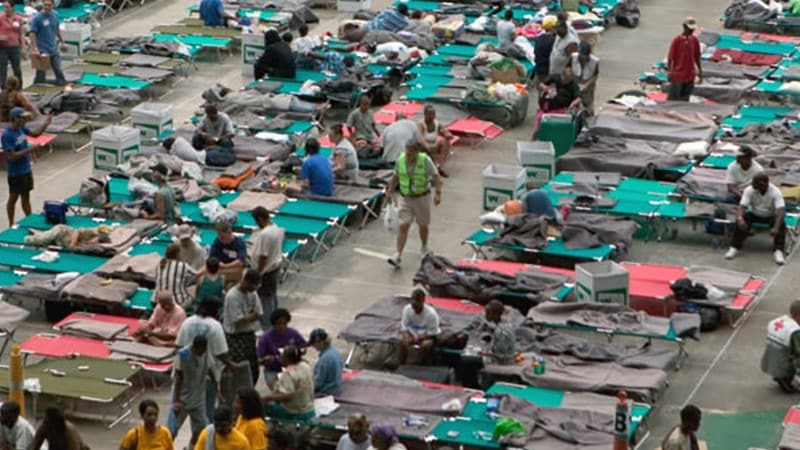What to know
You may be advised to evacuate to another area after a radiation emergency to avoid unsafe conditions. Emergency officials will tell you where the shelter is and how to safely get there. Plan to bring an emergency kit for yourself and your pets.

Going to emergency shelters
Local authorities will tell you
- When to go to an emergency shelter
- Where the shelter is located
- The safest path for travel
- If you should go to a community reception center before you proceed to the emergency shelter
Emergency shelters will be located away from areas with high levels of radiation. Local officials will tell you which route to take to avoid radioactive fallout or other hazards.
If you are evacuating to an emergency shelter, the shelter will provide
- Water
- Food
- Essential medicines
- Basic sanitary facilities
Plan to bring
- Any medicines and prescriptions you are taking
- Important papers
- A change of clothes
Other steps
Plan to take an emergency supply kit with you so you will have the supplies you need. Emergency shelters can involve living with many people in a confined space, which can be difficult.
Make a plan and prepare an emergency kit for your pets. Find out if your emergency shelter will accept pets. If shelters accommodate pets, usually the pets are housed in a separate area from people.
Try to deal with the emergency calmly and confidently to help children cope.
Locating family or friends
Normal lines of communication may not work. Depending on the size and scope of the radiation emergency, it may be difficult to complete a phone call. Try to use text messages (SMS) if possible. Learn about other ways to stay tuned.
The American Red Cross can help you locate or connect with a loved one or friend who has been impacted by a current disaster event.
Visit CDC's Prepare Your Health website for more information on staying connected to family or friends after a disaster.
